Fat loss doesn’t start in the gym, it starts in your kitchen. The foods you eat every day decide whether your body stores fat or burns it.
What if the secret to losing weight wasn’t salads or smoothies, but simple Indian foods already sitting in your pantry? From dal to curd, the right ingredients can transform your metabolism.
Here are 25 weight reducing foods Indian dieticians swear by, everyday staples that make shedding fat feel effortless and real.
What is Wrong with Traditional Indian diets?
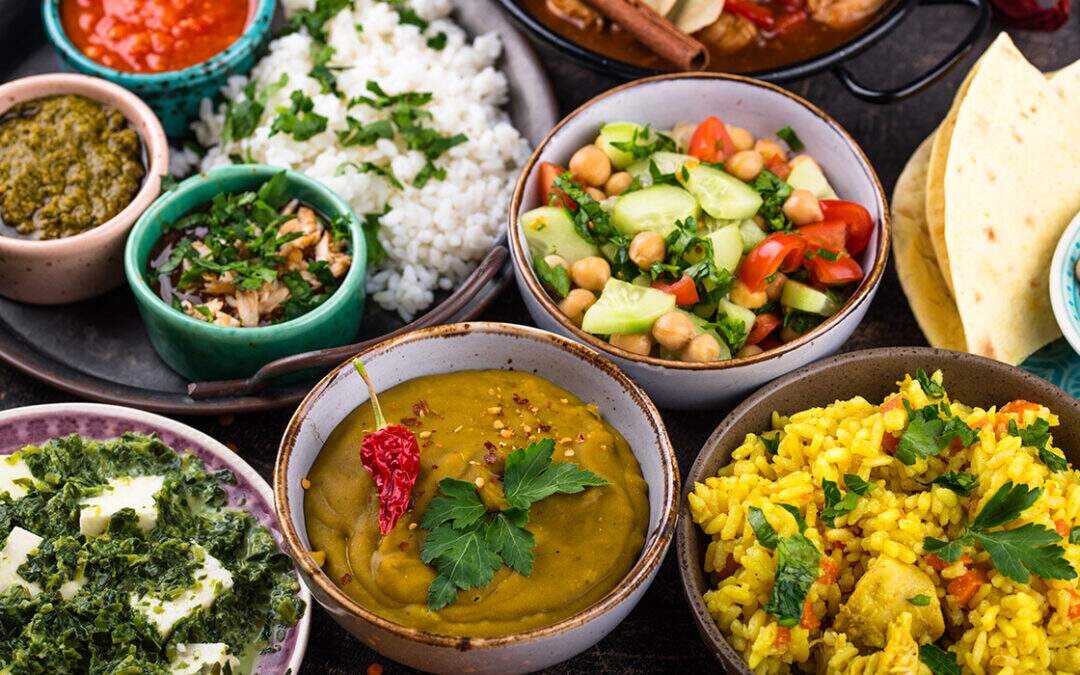
Traditional Indian diets often rely on refined carbohydrates and sugary drinks, which raise calorie intake and slow metabolism. With minimal dietary restrictions, rich foods dominate while fresh produce gets ignored.
Most home-cooked plates include large portions of rice, rotis, or gravies with limited vegetables or protein. The result is a quick burst of energy followed by fatigue, cravings, and gradual weight gain. It’s not what we eat that hurts progress, but how much and how often.
Some common habits that disrupt healthy weight balance include:
-
Using excess oil, ghee, and butter in everyday cooking.
-
Relying on polished rice or maida instead of whole grains.
-
Eating late dinners or skipping breakfast entirely.
-
Overusing sugary chai, soft drinks, or packaged snacks.
-
Treating festive-style meals as daily food.
This routine keeps the body in a calorie surplus while leaving it low on protein, fiber, and hydration — the very tools needed for fat loss. Over time, the metabolism adapts to this imbalance, burning fewer calories even during rest.
Correcting it doesn’t mean abandoning traditional flavors. The fix lies in composition, not restriction. A few shifts make all the difference:
-
Swap refined carbs for complex ones like millets, oats, or brown rice.
-
Add one lean protein source to every meal, such as dal, paneer, or eggs.
-
Use controlled amounts of ghee or oil rather than cutting them entirely.
-
Make half the plate vegetables to increase fiber and fullness.
Once balance returns to the plate, your metabolism naturally resets. Fat loss becomes steady, energy improves, and Indian food remains both comforting and effective.
"Take care of your body. It’s the only place you have to live."
— Jim Rohn
This rebalanced approach lays the groundwork for the next step, discovering the 25 Indian superfoods that make healthy eating truly sustainable.
25 Indian Superfoods to Eat Daily for Sustainable Fat Loss
Packed with essential nutrients, these foods make maintaining a healthy weight easier and promote weight loss naturally. A sustainable Indian diet plan should blend tradition with science by focusing on nutrient-dense options.
This ensures your Indian weight loss diet feels both realistic and effective for long-term results.
High-Protein Indian Superfoods for Fat Loss
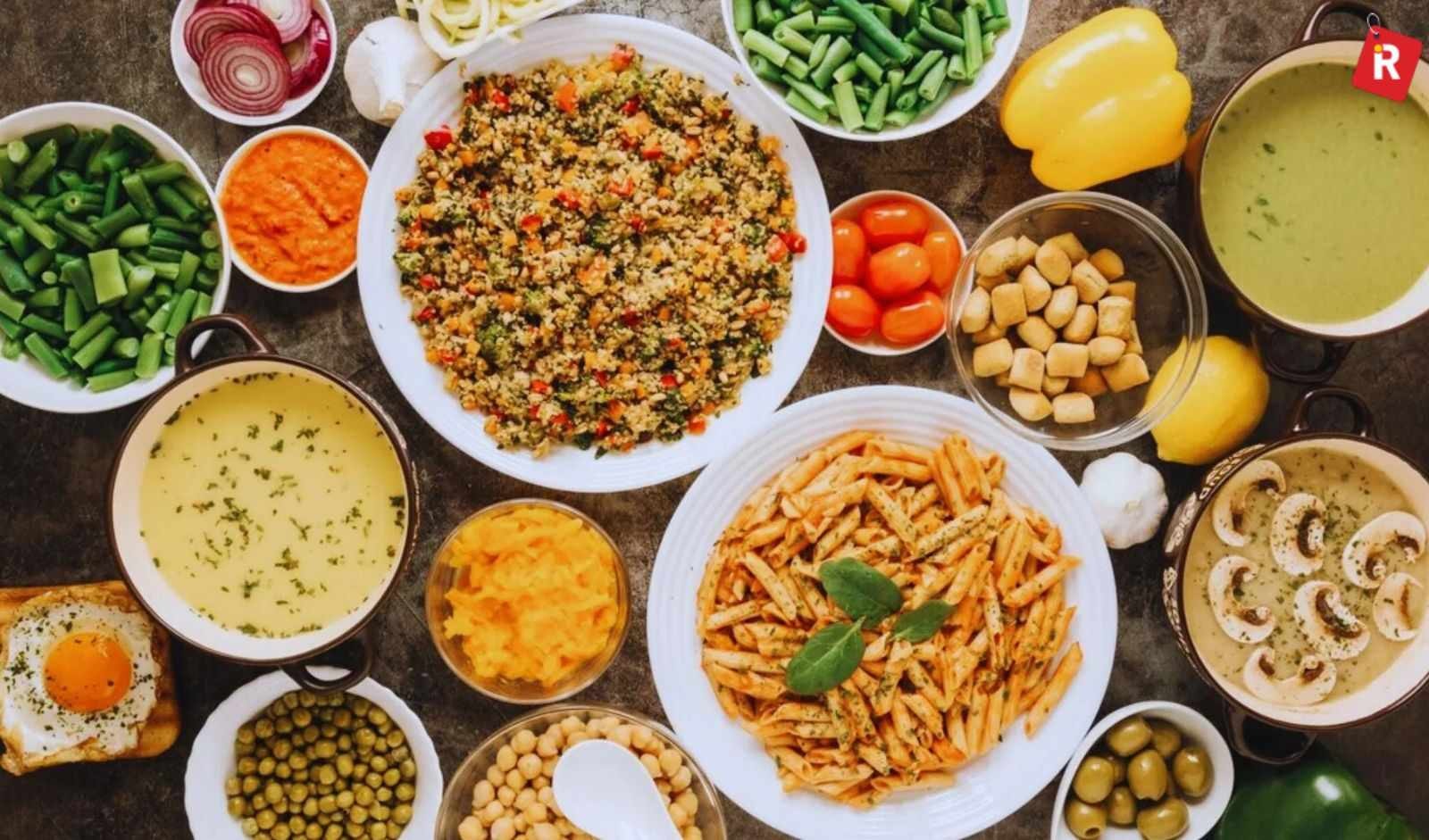
Protein rich foods like chicken breast, lentils, and Greek yogurt help preserve muscle and reduce body fat. Vegetarian protein sources such as kidney beans or low fat paneer offer essential vitamins for balanced nutrition.
Whether you include paneer or prefer eating meat, these foods form the foundation of steady, healthy fat loss.
1. Chicken Breast
Lean and filling, chicken breast offers high-quality protein with minimal fat. Ideal for grilled or sautéed meals that stay light yet satisfying.
2. Paneer (Cottage Cheese)
A staple vegetarian protein source that’s versatile in curries, salads, or snacks. It keeps you full longer and supports muscle maintenance.
3. Eggs (Boiled or Omelet)
A complete protein that balances fat and micronutrients perfectly for breakfast or light dinners.
4. Green Moong Dal
High in both protein and fiber, this easily digestible pulse keeps your metabolism active through the day.
5. Lentils and Legumes (Toor Dal, Masoor Dal, Rajma)
Packed with iron, folate, and plant-based protein, these improve energy levels and support lean mass.
6. Greek Yogurt or Curd
Boosts gut health, aids digestion, and maintains muscle during calorie deficits.
7. Black Chickpeas (Kala Chana)
A slow-digesting legume that curbs hunger and works perfectly for mid-morning snacks.
Once protein becomes the anchor of your meals, fat loss stabilizes naturally, it’s the foundation every sustainable diet needs.
Healthy Fats and Seeds for Weight Control
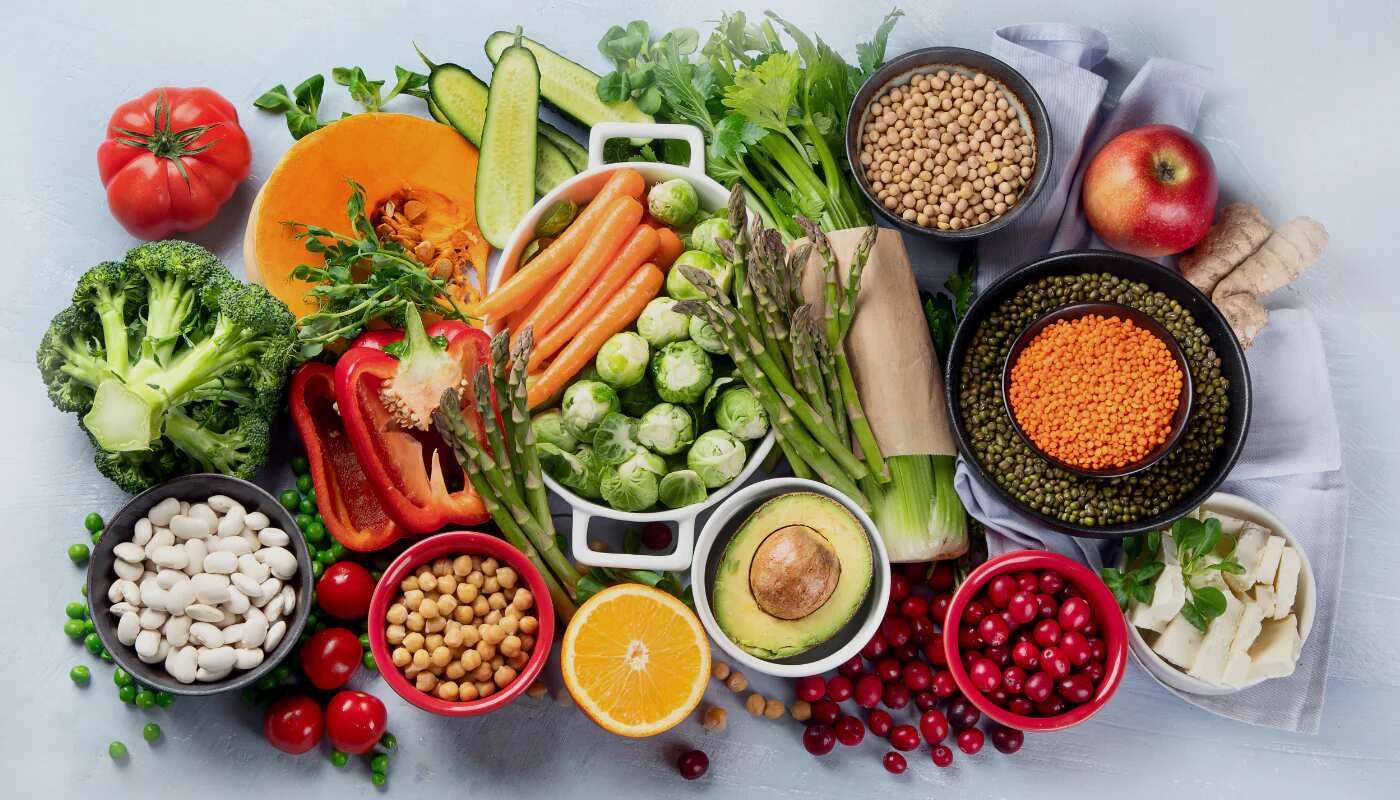
Using olive oil, ghee in moderation, and nuts adds healthy fats that regulate hormones and support a sustainable diet plan. These foods help control body fat and provide essential nutrients the body needs for energy and recovery.
When used wisely, they promote weight loss without compromising satisfaction or flavor.
1. Chia Seeds
Rich in omega-3 and fiber, they absorb water and keep you full for hours.
2. Flaxseeds
Support heart health and improve digestion when ground and added to smoothies or rotis.
3. Almonds and Walnuts
Small handfuls help manage cravings and stabilize blood sugar.
4. Ghee (in moderation)
Improves nutrient absorption and adds richness without guilt when used in controlled portions.
5. Coconut Water and Coconut Meat
Hydrating, mineral-rich, and refreshing, ideal for post-workout recovery.
Used wisely, these fats make your diet enjoyable, preventing burnout and hunger crashes.
Fiber-Rich Indian Foods That Curb Hunger
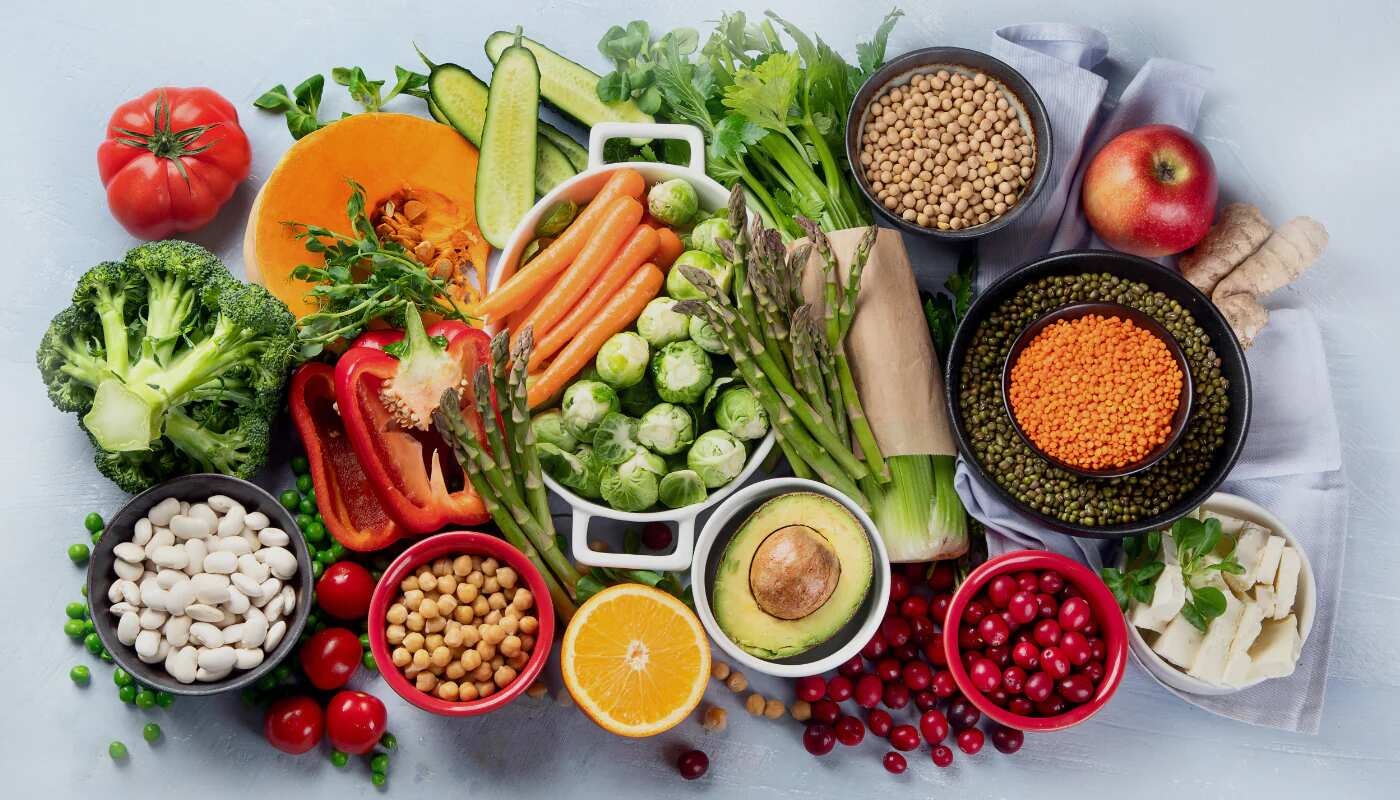
Whole grains, fresh vegetables, and non starchy vegetables like sweet potatoes improve digestion and prevent overeating. Fresh fruits and a warm bowl of vegetable soup or dal add both comfort and nutrition.
These high-fiber choices sustain energy and help maintain fullness, supporting consistent weight control effortlessly.
1. Millets (Ragi, Jowar, Bajra)
Provide complex carbs and fiber that sustain energy through long workdays.
2. Oats and Dalia (Broken Wheat)
A comforting and filling breakfast base that aids digestion.
3. Cucumber and Bottle Gourd (Lauki)
Cooling, low-calorie vegetables that support detox and hydration.
4. Sprouts
Light, nutrient-dense, and easy to digest, great for mid-day salads.
5. Spinach, Broccoli, and Cabbage
Loaded with fiber, antioxidants, and minerals that strengthen metabolism.
A plate filled with color, crunch, and whole grains keeps both your gut and metabolism active.
Spices and Drinks That Support Fat Burning

Lemon juice, turmeric, and cinnamon naturally boost metabolism and support a healthy weight when used regularly. Combined with a balanced weight loss diet, these ingredients aid digestion and fat breakdown.
Keeping metabolism active through such natural additions makes your routine more energizing and easier to follow long term.
1. Turmeric
Reduces inflammation, improves liver health, and aids fat metabolism.
2. Cinnamon
Helps control blood sugar and reduces sweet cravings.
3. Fenugreek (Methi)
Supports digestion and naturally helps break down stored fat.
4. Lemon and Warm Water
A simple morning ritual that boosts hydration and improves digestion.
5. Green Tea and Herbal Infusions
Help oxidize fat and improve overall metabolism when consumed regularly.
These additions make small meals more efficient, keeping the body light and active through the day.
Everyday Staples for Sustainable Weight Loss

Daily essentials like amla, curry leaves, and moringa deliver essential vitamins that improve digestion and overall health. Light meals such as a fresh fruit salad or a simple filling meal nourish the body with essential nutrients.
These staples promote weight loss while keeping your diet consistent and easy to maintain.
1. Amla (Indian Gooseberry)
Rich in vitamin C, supports immunity and fat oxidation.
2. Curry Leaves
Detoxify the liver and improve digestion naturally.
3. Moringa Leaves (Drumstick Leaves)
Loaded with iron and antioxidants that aid energy and weight management.
4. Brown Rice or Quinoa
Provide slow-releasing carbs and prevent energy dips during long days.
5. Apple Cider Vinegar (in moderation)
Improves digestion, reduces bloating, and aids fat metabolism.
Each of these builds the rhythm of a lifestyle, not a short-term plan. Together, they make Indian food a reliable partner in sustainable fat loss.
"Let food be thy medicine and medicine be thy food."
— Hippocrates
The next step is understanding how to use these foods strategically, through a structured Indian diet plan that turns knowledge into results.
Add these Indian superfoods to your personalized plan on Balanced Bite and make every meal work for your goals
10 Steps to build an Indian diet plan for Weight-loss
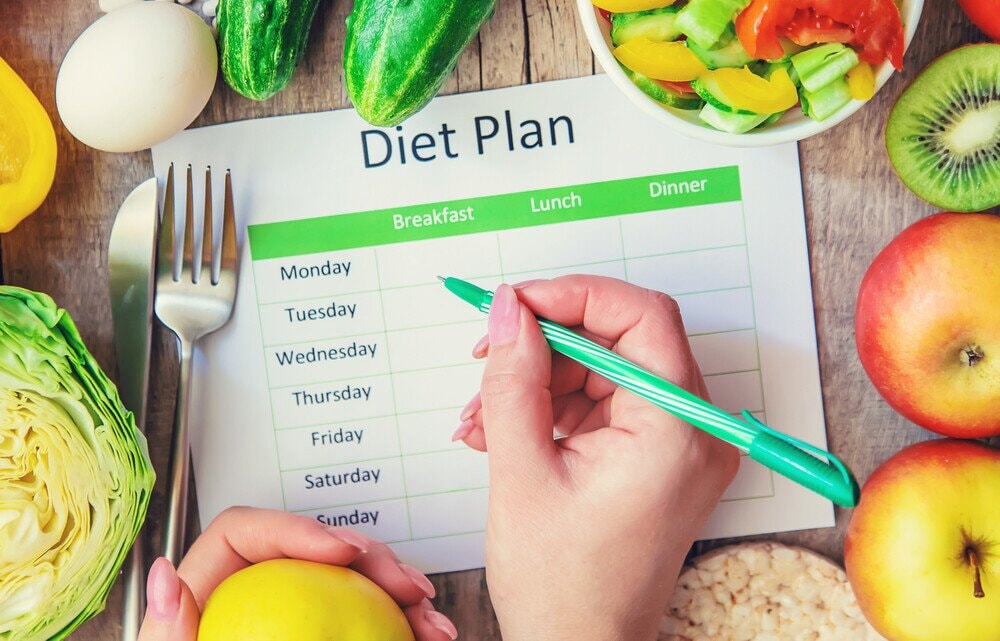
An effective Indian weight loss plan depends on consistent calorie intake, nutrient balance, and portion awareness. A well-planned weight loss plan blends low fat meals, whole grains, and lean proteins to help you lose fat sustainably.
This structure makes following a sustainable diet plan practical for everyday life.
1. Define Your Calorie Target and Fat Loss Goal
Before you start picking foods, know how much your body truly needs. Setting a calorie target gives direction to your efforts and ensures your weight loss stays consistent, not chaotic.
-
Calculate your maintenance calories using a reliable online calculator.
-
Create a 15–20% calorie deficit for steady and healthy fat loss.
-
Avoid extreme cuts that can slow metabolism or cause fatigue.
A defined target turns random eating into structured, measurable progress.
2. Choose a Balanced Macro Ratio Suitable for Indian Meals
A balanced plate is the difference between dieting and nourishment. Getting the right mix of carbs, protein, and fats helps your body function at its best while keeping you satisfied.
-
Stick to 40–45% carbs, 25–30% protein, 25–30% fats.
-
Distribute macros evenly through breakfast, lunch, and dinner.
-
Include diverse food sources like lentils, paneer, and ghee in moderation.
This approach helps you enjoy traditional Indian meals without losing control of nutrition.
3. Add Lean Protein Sources Like Chicken Breast, Paneer, or Lentils
Protein is the foundation of every successful weight loss plan. It keeps you full, supports muscle repair, and reduces unhealthy cravings.
-
Vegetarian options: paneer, moong dal, rajma, black chana.
-
Non-vegetarian options: chicken breast, fish, eggs.
-
Include at least one protein source in every meal.
Pair your protein with light sides like sautéed vegetables or even a small bowl of rice pudding made with low-fat milk for a satisfying finish.
4. Include Healthy Fats from Nuts, Seeds, and Traditional Oils in Moderation
Not all fats are bad; in fact, the right ones support hormones, joint health, and satiety. Including measured fats ensures your meals are both healthy and flavorful.
-
Use 1–2 teaspoons of olive oil, ghee, or coconut oil per meal.
-
Add nuts and seeds for extra texture and healthy omega-3s.
-
Rotate oils weekly to avoid monotony and nutrient gaps.
Moderation makes fats work for your goals instead of against them.
5. Prioritize Complex Carbs Such as Brown Rice, Millets, and Whole Wheat
Carbs aren’t the enemy, refined ones are. Complex carbs provide steady energy, improve digestion, and prevent sugar crashes.
-
Swap refined grains for ragi, jowar, or bajra.
-
Limit polished white rice and sugary snacks.
-
Combine carbs with fiber and protein for better satiety.
This simple shift keeps energy stable while fueling workouts and daily activity.
6. Plan 5–6 Small Meals to Maintain Steady Energy and Metabolism
Eating at regular intervals helps control hunger and stabilizes blood sugar levels. It also prevents overeating during main meals.
-
Eat every 3–4 hours with balanced portions.
-
Ideal structure: breakfast, mid-morning snack, lunch, evening snack, dinner, optional night drink.
-
Include fruits, nuts, and lean proteins for variety.
This structure keeps metabolism active while promoting mindful eating throughout the day.
7. Add Chia Seeds or Flaxseeds for Extra Fiber and Omega-3 Boost
Small additions can create big changes. Chia and flaxseeds improve gut health, provide essential fats, and keep you full longer.
-
Add 1 teaspoon to smoothies, salads, or curd.
-
Soak them before eating for better digestion.
-
Rotate both seeds to get balanced nutrition.
These seeds are your simplest way to improve digestion and nutrient absorption without adding extra calories.
8. Schedule an Evening Snack That Fits Within Your Calorie Range
Evenings are when most people slip up. Choosing smart snacks ensures you stay full without derailing your progress.
-
Opt for roasted makhana, sprouts, or Greek yogurt with cinnamon.
-
Skip fried or sugary tea-time snacks.
-
Keep portions light yet filling.
A good evening snack curbs cravings and helps you close your day on a strong note.
9. Keep Hydration a Daily Priority
Hydration supports digestion, reduces false hunger, and helps your body process nutrients efficiently. It’s the simplest yet most ignored step in weight loss.
-
Drink 2.5–3 liters of water daily.
-
Add lemon, mint, or cucumber for flavor and detox effect.
-
Drink before meals to reduce overeating.
Staying hydrated keeps your metabolism running smoothly and energy levels high.
10. Track Progress Weekly and Adjust Portions
Consistency matters more than perfection. Tracking helps you understand patterns, measure success, and adapt your plan to real results.
-
Weigh yourself once a week under similar conditions.
-
Use apps like HealthifyMe or MyFitnessPal to log meals.
-
Adjust portion sizes if weight stalls for two weeks or more.
Progress tracking keeps you accountable and transforms healthy eating into a lasting habit.
Turn these ten steps into action with Balanced Bite and watch your consistency turn into visible progress
8 Common Mistakes Indians Make While Trying to Lose Weight
Relying on sugary snacks, skipping steamed vegetables, or overusing oil in stir fried veggies often slows results. Choosing refined carbohydrates instead of fresh vegetables and forgetting to chew slowly can affect digestion and fullness.
Correcting these simple habits creates a more enjoyable, balanced weight loss journey with lasting progress.
1. Ignoring Portion Control While Eating Indian Food
Even healthy or nutrient-rich foods can cause extra calories when portions aren’t tracked. Balanced diet habits matter more than quantity alone. Large servings of rice, rotis, or fried foods often double your food intake without realizing it. Knowing how much weight you gain from small excesses keeps results steady and supports weight loss naturally.
How to fix it
-
Use smaller plates to control portion size.
-
Fill half your plate with vegetables or salad.
-
Measure servings of rice or snacks before eating.
-
Track calorie intake for better awareness.
When quantity aligns with quality, even traditional Indian meals become perfectly balanced for fat loss.
2. Skipping Meals Instead of Learning to Eat Mindfully
Skipping breakfast or a mid-morning snack slows digestion and reduces energy. Learning to eat mindfully helps you recognize fullness, manage food intake, and maintain balance throughout the day. Regular, well-timed meals support weight loss better than restrictive gaps that eventually trigger overeating later.
What to do instead
-
Eat smaller meals every 3–4 hours.
-
Focus on chewing slowly and avoiding distractions.
-
Start your day with a protein-rich breakfast that boosts metabolism.
-
Keep a fixed meal schedule, especially on busy days.
Mindful eating ensures your body stays energized and metabolism runs smoothly throughout the day.
3. Overusing Oil and Ghee While Cooking
Fried foods and over-seasoned gravies quickly pile up extra calories that delay progress. Switching to sautéed veggies, grilled fish, or a vegetable stir fry keeps meals lighter while preserving flavor. Even traditional cooking can support weight loss when oils are measured and used thoughtfully.
Smarter cooking choices
-
Use an oil spray instead of pouring directly.
-
Prefer steaming, baking, or grilling for daily meals.
-
Add ghee only as a finishing touch for flavor.
-
Switch to heart-healthy oils like olive or mustard.
Controlling oil doesn’t mean compromising on taste, it simply means learning how to flavor food more intelligently.
4. Choosing Processed Foods Over Healthy Foods
Processed food and sugary snacks easily replace wholesome options without you noticing. These foods add refined carbs and empty calories with little nutrition. Opting for nutrient-rich, home-cooked meals keeps digestion active, boosts metabolism, and supports weight loss more effectively. The closer your ingredients are to their natural form, the better your body performs.
Healthy swaps to try
-
Replace packaged chips with roasted chana or makhana.
-
Choose homemade smoothies over bottled drinks.
-
Snack on fruit bowls instead of cookies or biscuits.
-
Avoid processed foods that add preservatives and excess sugar.
When your meals come from your kitchen and not a packet, your health begins to show it.
5. Loading Up on Carbs and Neglecting Protein
A plate full of refined carbs feels comforting but rarely satisfies long-term. Balanced meals with protein and fiber stabilize energy and support weight loss. Pairing dal, paneer, or grilled fish with whole grains gives your body steady fuel.
Simple protein-balancing habits
-
Add one protein-rich food to every meal.
-
Include lentils, eggs, or stir fried tofu regularly.
-
Try healthy desserts like rice pudding made with low-fat milk for balance.
-
Combine grains like millets with pulses for complete protein.
Balanced plates sustain energy longer, keeping cravings and overeating in check.
6. Overeating During Social or Family Gatherings
When surrounded by indulgent dishes, it’s easy to lose track of portions. Social occasions should be enjoyed, but awareness helps you avoid excess calories. Choosing lighter sides like vegetable stir fry or controlling portions keeps your goals intact while letting you enjoy the occasion fully.
How to stay in control
-
Eat a light snack before attending events.
-
Fill half your plate with veggies or salads.
-
Avoid second helpings unless truly hungry.
-
Savor each bite to slow down eating speed.
Food tastes better when enjoyed consciously rather than carelessly.
7. Ignoring Hydration and Fiber Intake
Neglecting water and fiber slows digestion and affects metabolism. Fresh fruits, salads, and vegetable soups are easy ways to stay hydrated and full longer. Maintaining water balance ensures nutrients are absorbed well and cravings stay low, which ultimately supports weight loss over time.
Hydration tips
-
Drink 2.5–3 liters of water daily.
-
Start meals with a glass of water or light soup.
-
Eat fiber-rich foods like oats, apples, and greens.
-
Avoid processed foods and sugary drinks that dehydrate the body.
Hydration and fiber together create the perfect foundation for smooth digestion and steady energy.
8. Expecting Quick Results Without a Structured Diet Plan
Chasing shortcuts rarely works. Sustainable fat loss depends on structure, patience, and consistency. Tracking meals and setting weekly goals ensures visible and lasting progress.
How to stay consistent
-
Plan your weekly meals in advance.
-
Track calorie intake with an app or journal.
-
Set realistic targets for every two weeks.
-
Focus on progress, not perfection.
Real transformation comes from persistence, not pressure. Once structure takes over guesswork, results follow naturally.
"Small changes eventually add up to huge results."
— Unknown (fitness & wellness proverb)
Correcting these common mistakes doesn’t require strict dieting, only better habits. When mindful eating, hydration, and structure become part of daily life, fat loss stops feeling like effort and starts becoming second nature
FAQs
1. What Are the Best Evening Snack Options That Support Fat Loss Without Breaking the Diet?
Go for light, protein-rich snacks like roasted chana, sprouts, or a small bowl of curd with chia seeds. They keep hunger under control and prevent late-night cravings without adding unnecessary calories.
2. How Many Times Should You Eat Meals in a Day for Effective Weight Management?
Eating four to six balanced meals a day helps maintain steady energy and metabolism. The goal is to avoid long gaps between meals so your body uses nutrients efficiently and prevents overeating later.
3. Can a Diet Chart Help Track Progress Better Than a Regular Meal Plan?
Yes, a diet chart adds structure by tracking portions, meal timing, and calories. It makes it easier to spot patterns, measure consistency, and adjust your plan when results slow down.
Conclusion
Real results don’t come from drastic diets but from quiet, consistent choices. Every ingredient on your plate can either drain your energy or help you feel lighter and more in control, the difference lies in awareness.
Focus on nourishment, not numbers. When your meals align with your lifestyle, weight loss stops being a struggle and starts becoming a steady rhythm. Begin with one mindful change today, and let your habits take care of the rest.
Take the first step toward smarter eating with Balanced Bite where real food meets real results.”






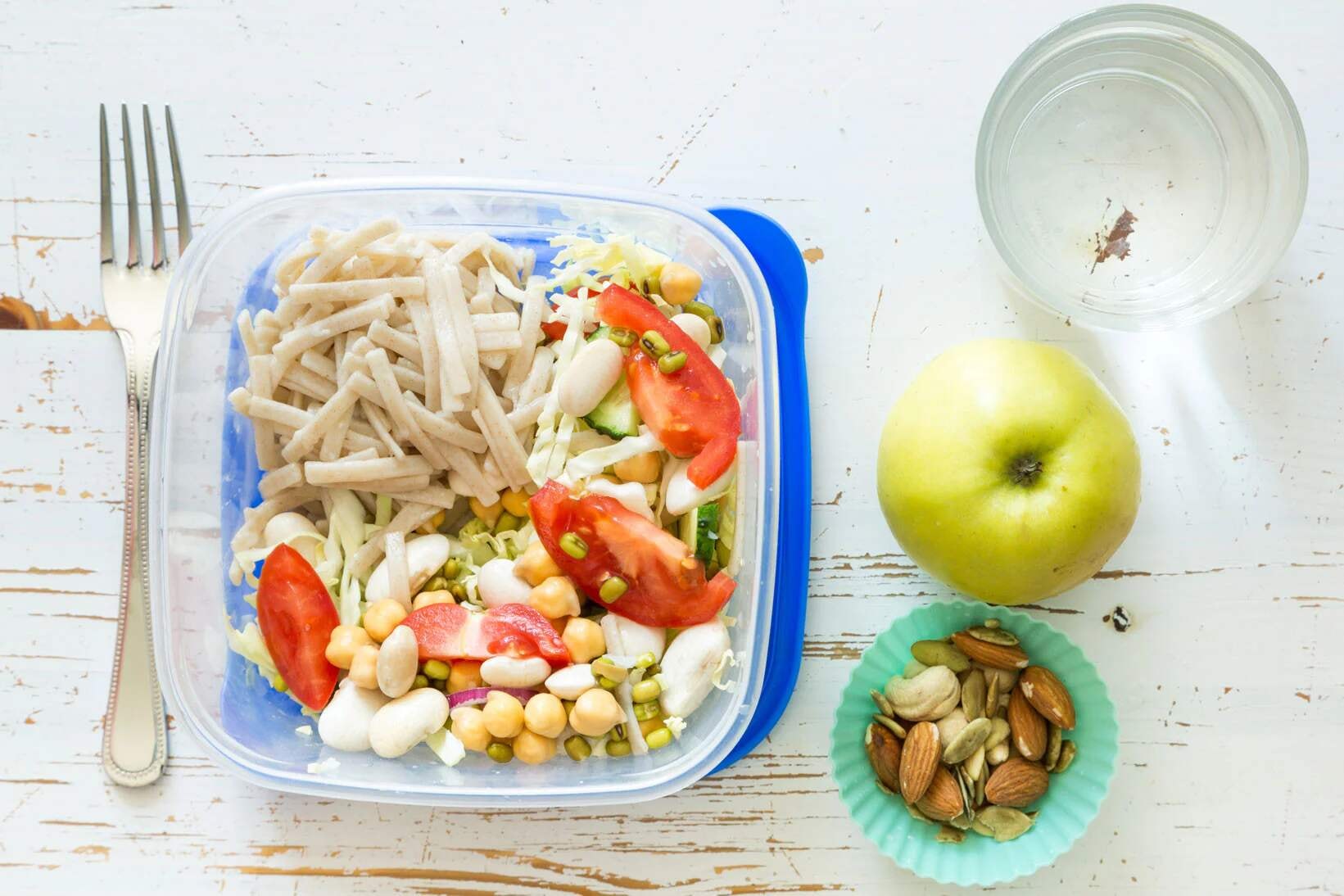
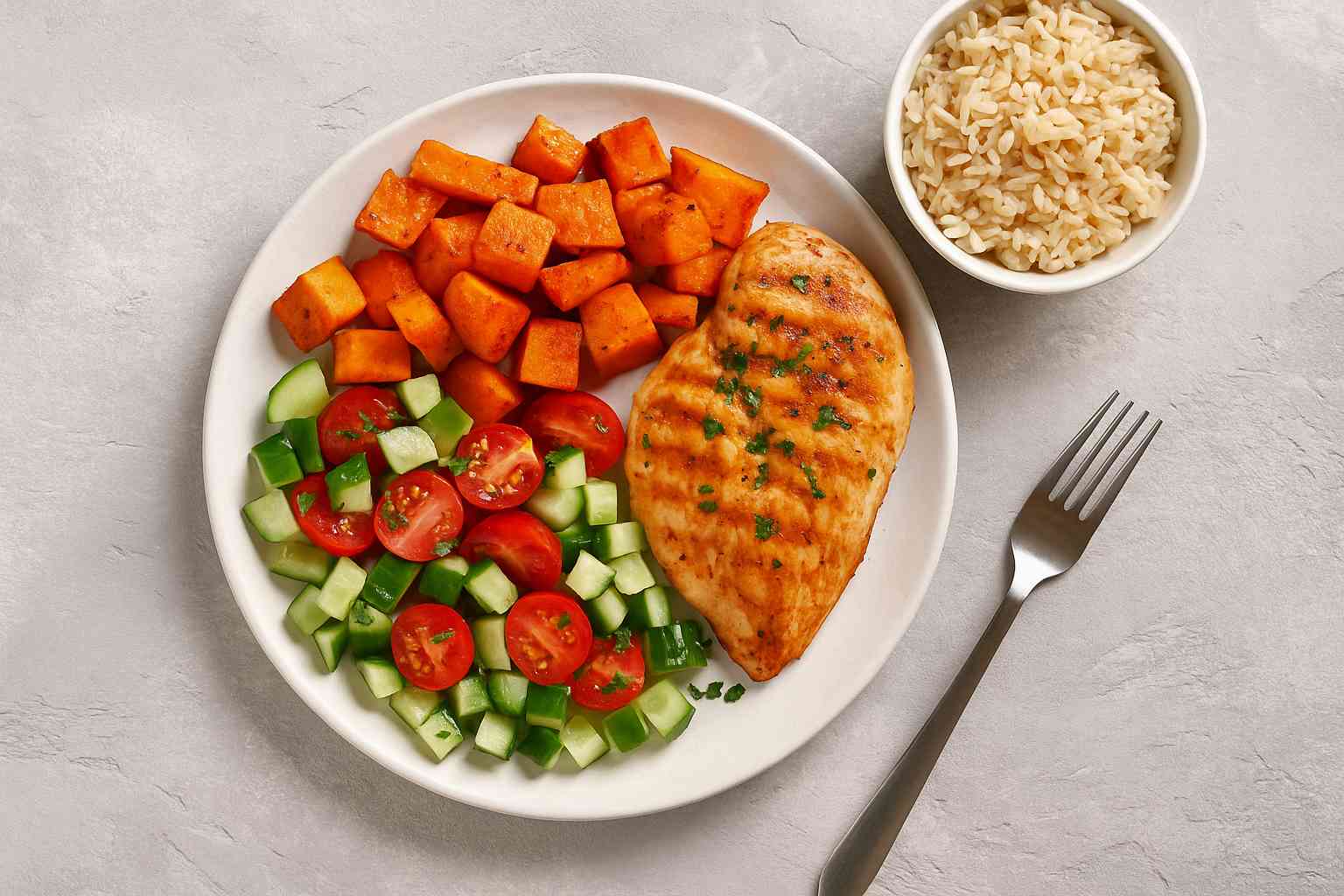
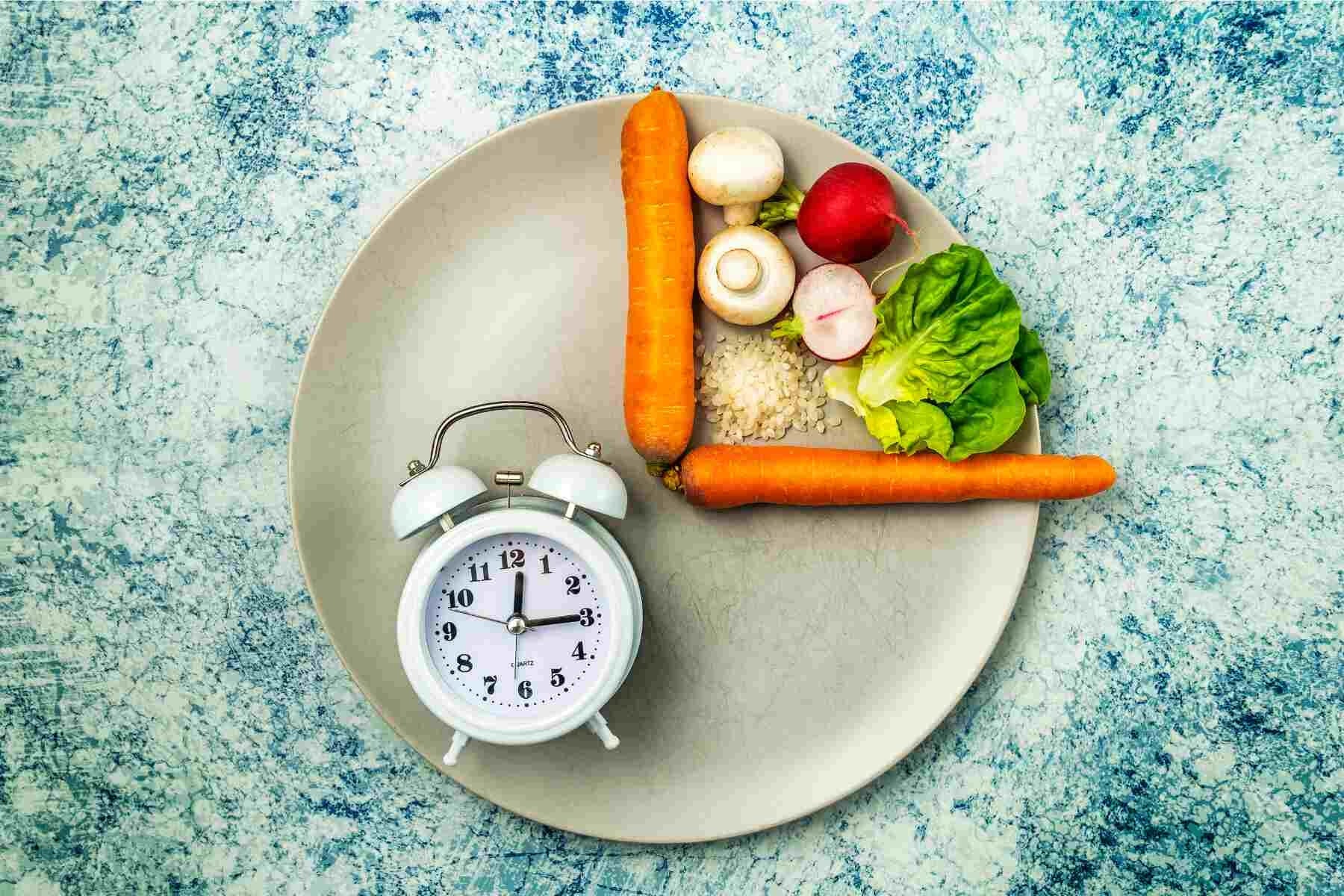

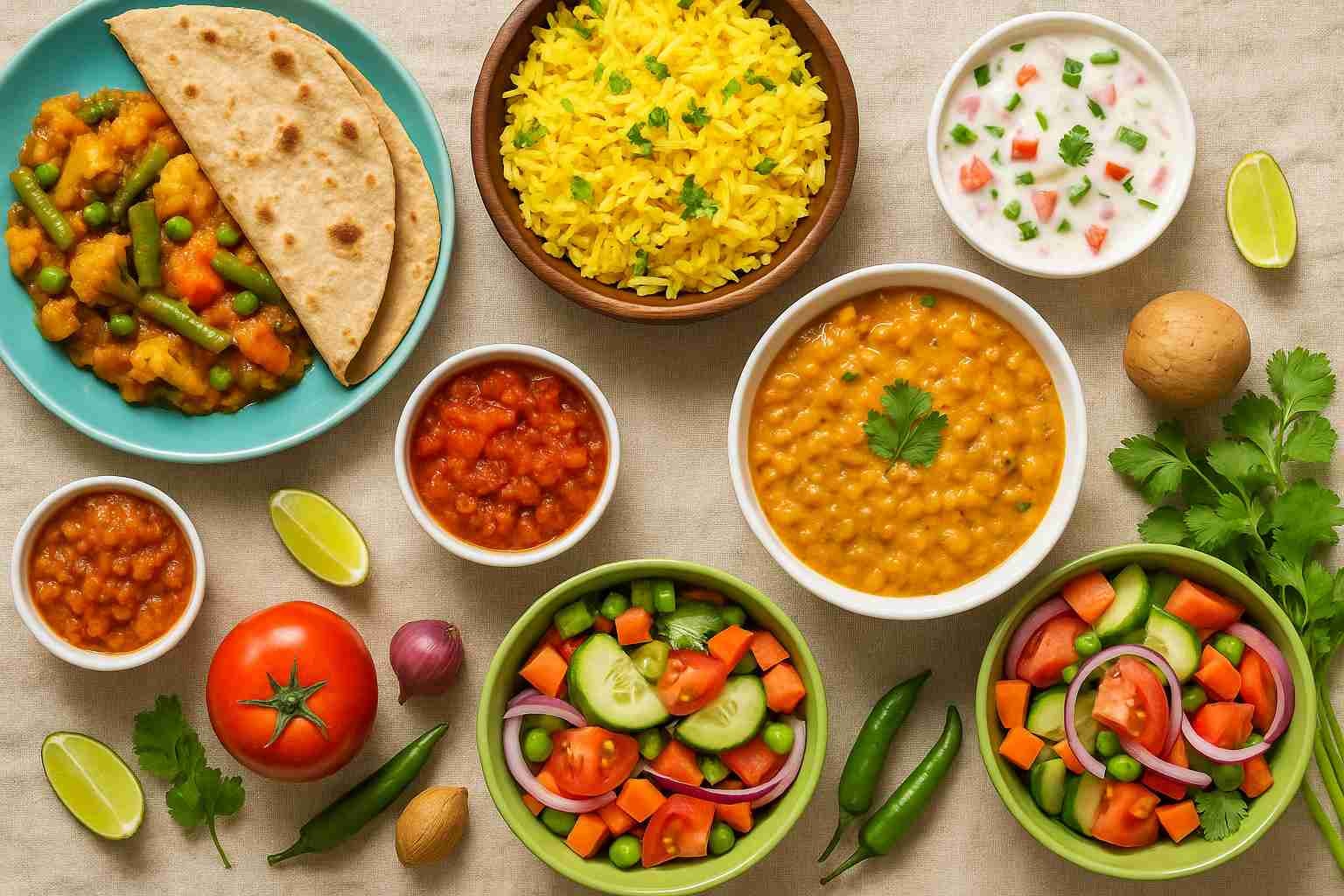




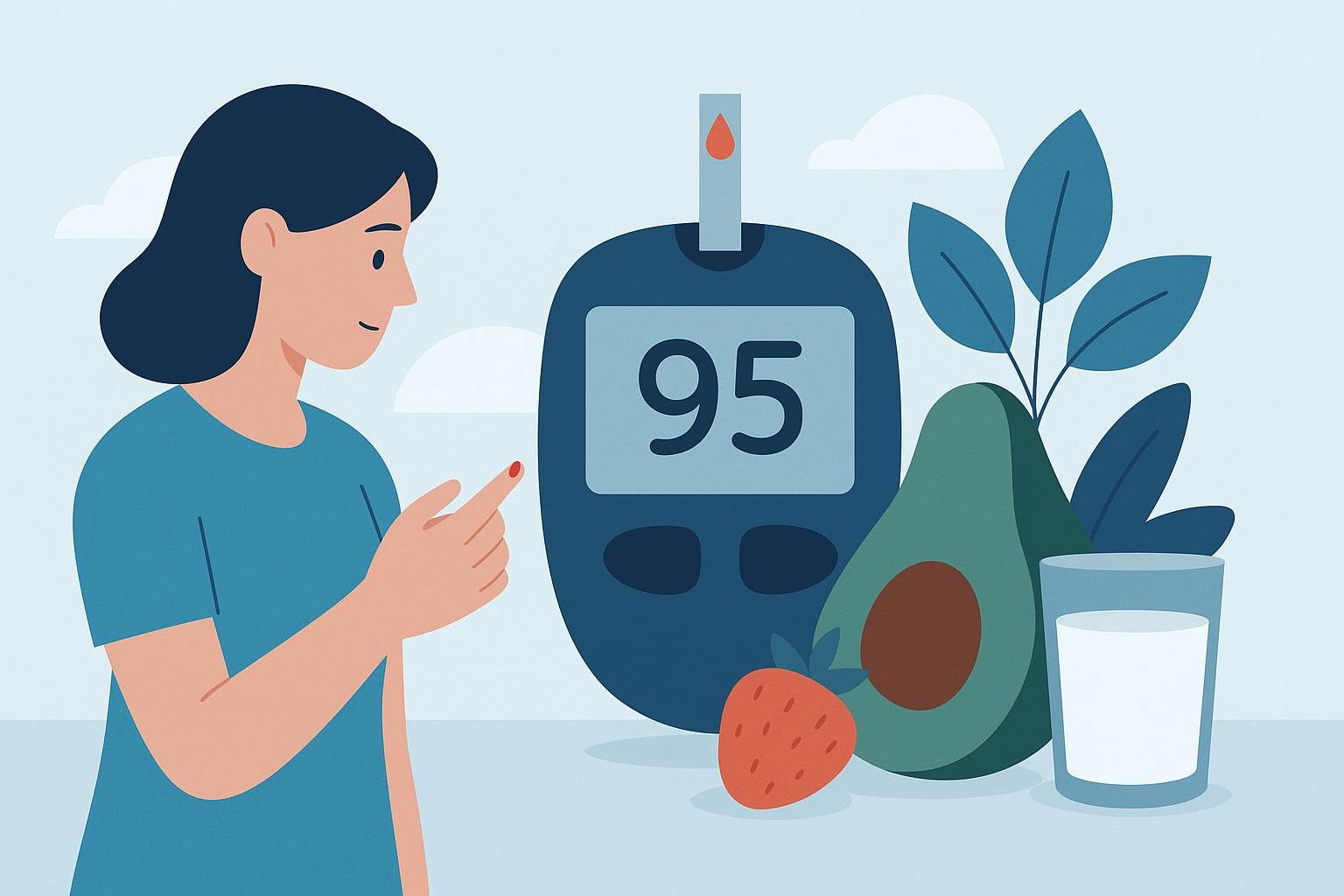
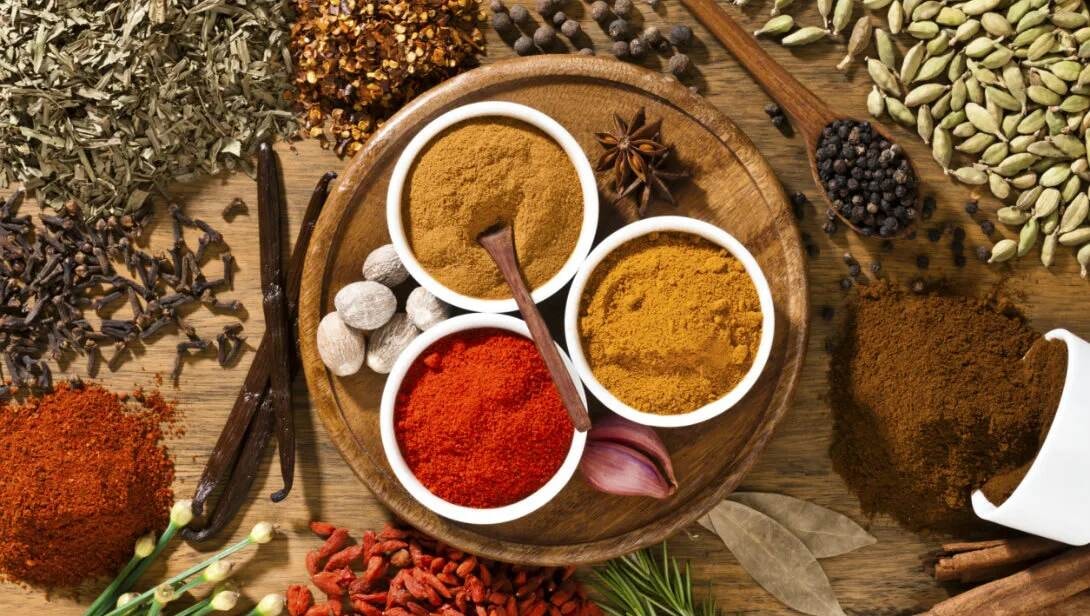
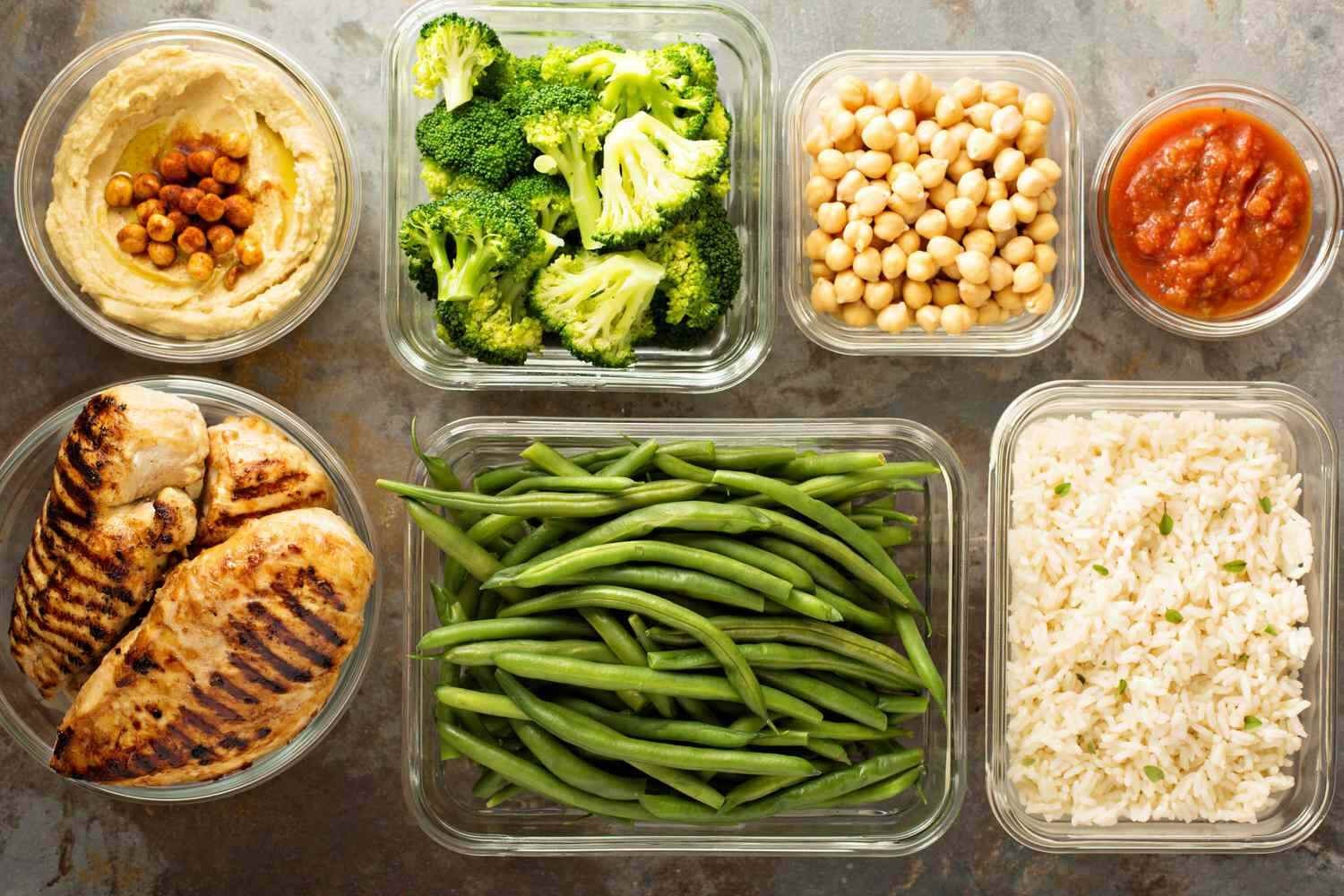
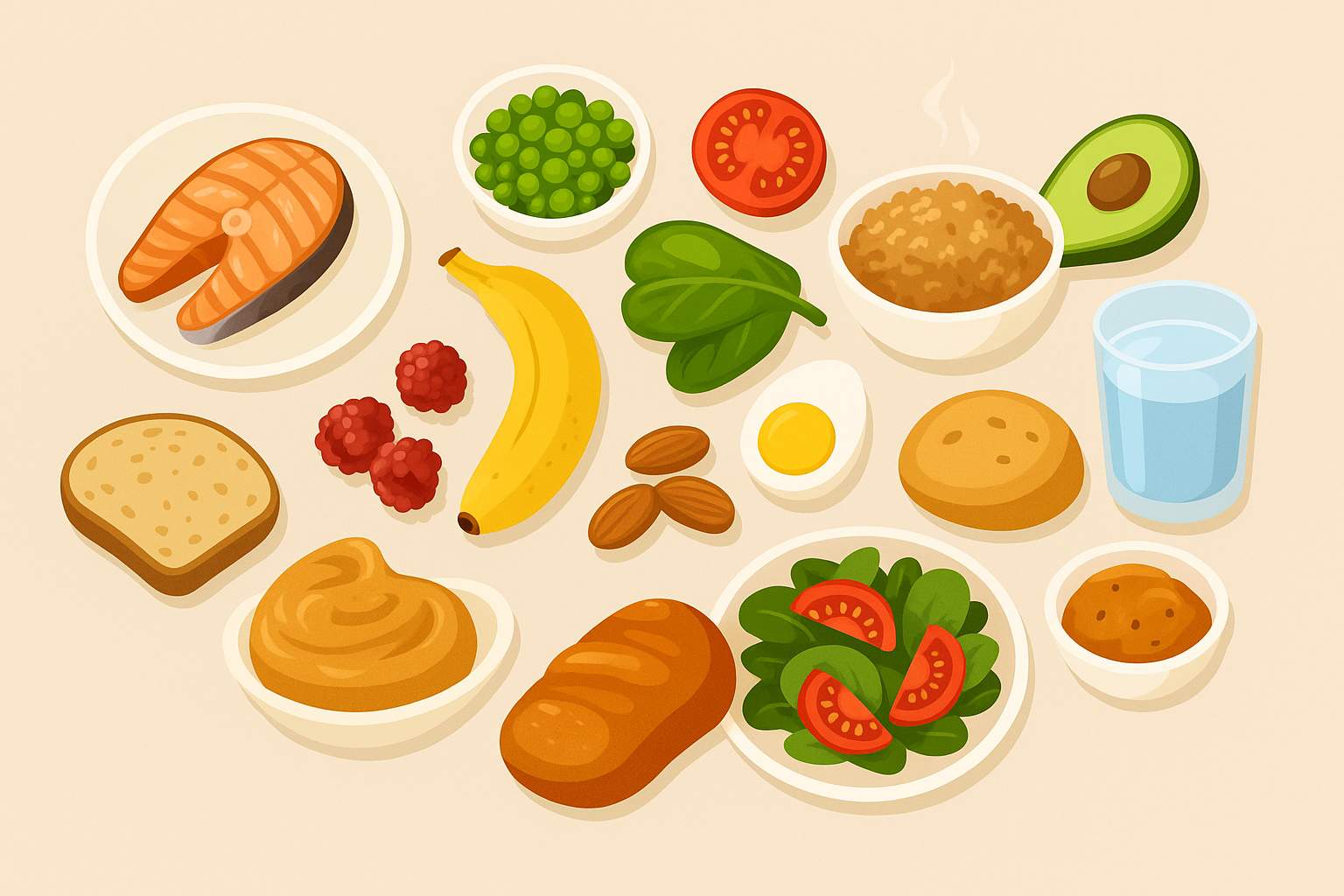
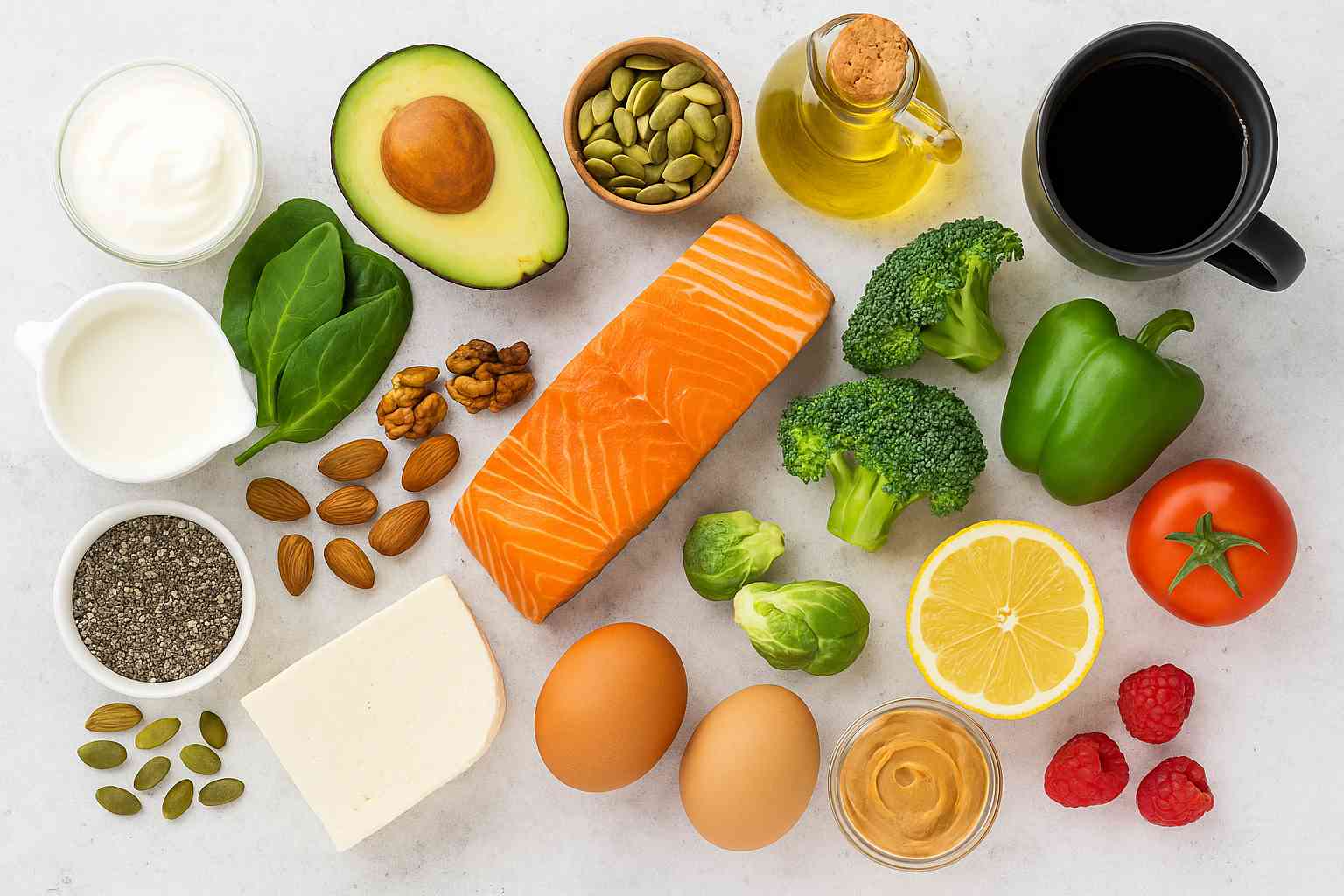
Leave a comment
Translation missing: en.blogs.comments.discription